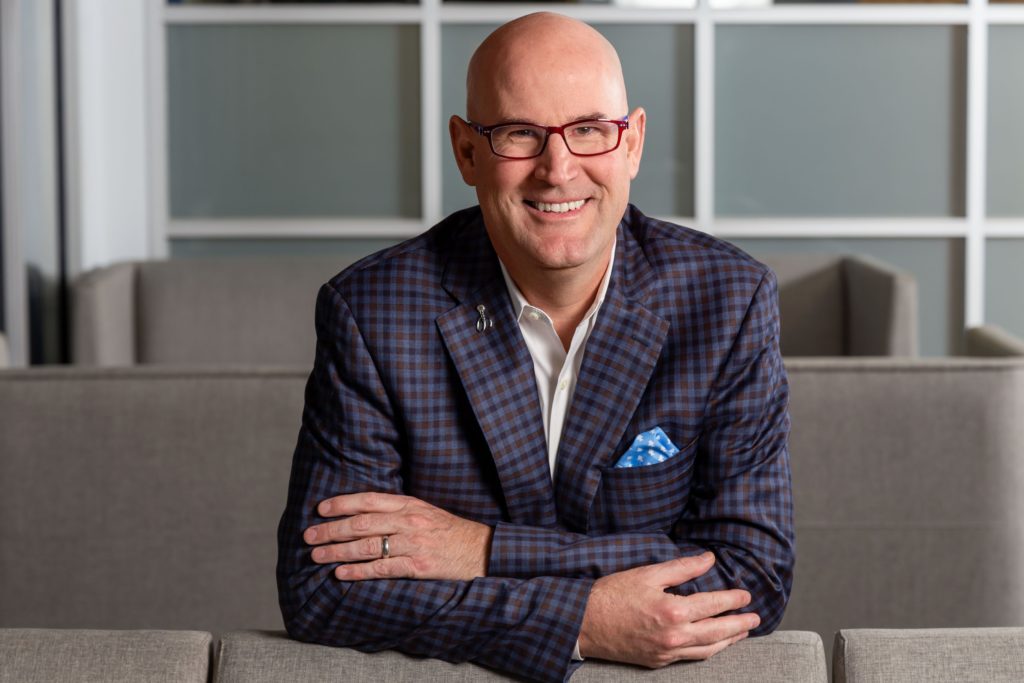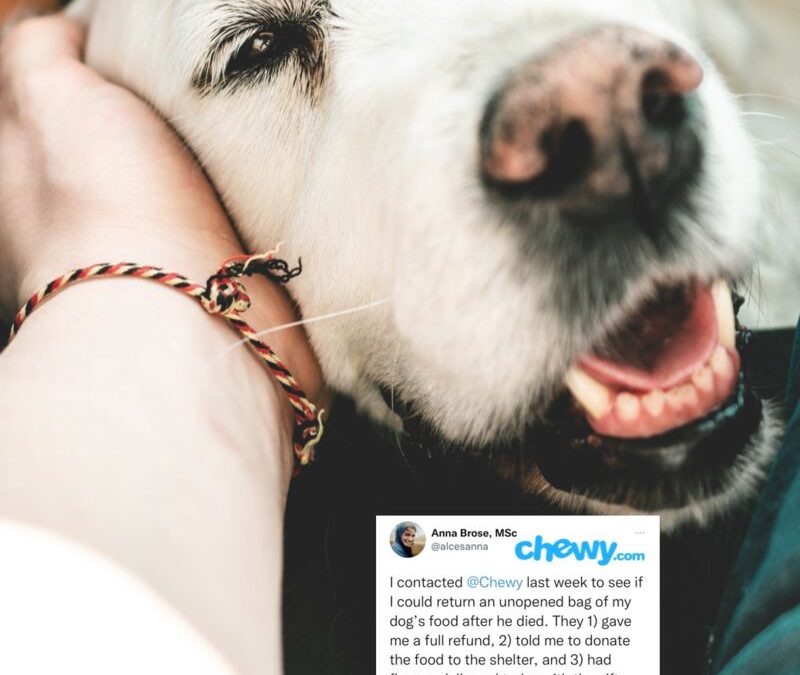Great customer service story from Chewy. And what I love the most is that it’s not a random act of kindness from the brand.
My friend Joshua Crum shared a tweet from Anna Brose. She tweeted this on Tuesday night:
“I contacted @Chewy last week to see if I could return an unopened bag of my dog’s food after he died. They 1) gave me a full refund, 2) told me to donate the food to the shelter, and 3) had flowers delivered today with the gift note signed by the person I talked to??”
Her dog (not the one pictured above) was named Gus.
This act of kindness is what I call a Purple Goldfish. Little things that go above and beyond to honor your relationship with the customer.
There are three types of acts of kindness:
1. Random Act of Kindness – the 1.0 kind. We’ve all seen this before. Good deeds or unexpected acts such as paying tolls, filling parking meters, or buying gas for consumers. They are usually one-off, feel-good activations. A random act of kindness draws upon gift economy principles, giving with no expectation of immediate return, except maybe for potential PR value.
2. Branded Act of Kindness – next level 2.0. Here the item given is usually tied closely with the brand and its positioning. It’s less random, more planned, and potentially a series of activations. This has the feel of a traditional marketing campaign.
3. Lagniappe Act of Kindness – 3.0 stuff. Kindness is embedded into your brand. Giving little unexpected extras (g.l.u.e.) is part of your product or service. This is rooted in the idea of “added value” to the transaction. Not a one-off or a campaign, but an everyday practice that’s focused on customers of your brand.
The beauty of creating a Purple Goldfish as a branded act of kindness is that there is no waste. You are giving that little extra to your current customers, and they will talk about it, giving you word-of-mouth credibility.
As for Anna’s one tweet, it has resulted in nearly 7,000 comments and nearly a half of million likes. That’s some good word of mouse!
Follow me on Twitter or LinkedIn.

Stan Phelps walks the walk. He stands out in the sea of sameness by modeling his own Differentiated Experience (DX) message: Differentiation isn’t just about what you say, it’s about what you do and, more importantly, how and why you do it. Stan leverages his unique collection of 5,000+ case studies on customer, employee, and brand experience to engage audiences with informative learning-based experiences. He believes purposeful DX wins the hearts of employees and customers, and differentiation ultimately boosts loyalty, retention, referrals, and results.
Find Stan’s in-person and virtual keynotes, workshops, and Goldfish tank programs at StanPhelps.com.

